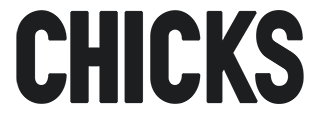New To Deer Hunting? This is What I've Learned Part 1
Over the weekend I had Chief and Dave from the Barstool Chicago office come back to central Illinois to go deer hunting. Being a mentor and filming Dave shoot his first deer was such an amazing experience! My favorite part was watching him experience that euphoric feeling and teaching him the whole process of before, during, and after the hunt. Many people may be curious or not understand what all goes into the hunt, including hunting licenses, and what is done after the animal is harvested, so here is a short explanation of what deer hunting in Illinois all entails.
Step 1: Hunters Safety Course
In order to purchase a hunting license you must have proof that you have taken the hunters safety course. I took this course when I was in elementary school. It is a one and done type of thing. You sit through a class, I think mine was three days long, and then take the hunters safety test. Once you pass that test you are now legally allowed to purchase a hunting license. I think now a days you can actually take this course online. Illinois recently created a new law allowing beginners, who have never purchased a hunting license in the past, to purchase a temporary apprentice license. This allows them to legally hunt as long as they are with a hunter with a valid hunting license. Dave and Chief went through this process and used an apprentice license.
Step 2: Seasons
There's multiple ways to harvest a deer. At the end of the day it is your weapon of choice, whether that weapon is a shot gun, muzzleloader, crossbow, spear, bow and arrow, etc. Bow season is open all season long; however, there are only two weekends out of the year you can use a shot gun and one weekend a muzzleloader to harvest a deer. There's also an antlerless deer (doe) weekend, but I don't remember when that is specifically. I personally don't gun hunt when it comes to deer so I don't count down the days to those seasons.
You'll hear the term hunting season be thrown around a lot. When you hear hunting season we typically are referring to an abundance of animals we hunt during the Fall and Winter seasons. Deer season in IL typically goes from Oct 1st through mid January. During that period you can use a bow as a legal weapon during gun season as long as you have a gun permit and wear orange. To be legal during gun season you have to wear orange to alert other gun hunters in the area, have a gun permit, and carry a FOID card.
Step 3: Purchase Tags
There are so many conservation laws that I don't know where to start, so I am just going to go ahead and fill ya'll in with the basics.
To be legal to hunt deer you must purchase your hunting license and a deer tag. If you are a nonresident this will cost you approximately $500 and if you are an in state resident it'd be probably around $60. This money all goes back into conservation. In Illinois, a resident is legally allowed to kill two bucks and a nonresident only one. Once you fill a tag, whether it is a doe or buck tag you must purchase another tag in order to continue to hunt. Long story short usually when you first purchase your tags you'll start off with one either sex tag (buck or doe) and one antlerless deer tag (doe only). These tags and your hunting license must always be on you while hunting.
Step 4: The Hunt
There's a lot that plays into the hunt. Weather and wind direction is a big one. Ideal conditions would be a wind direction that won't blow into the food plot you are hunting or towards the direction of the bedding area of the deer. Typically you would want the wind in your face, blowing towards the opposite direction you are hunting. That way when the deer come out they will not smell you.
The best time of the year to hunt, in my opinion, would be opening day of deer season, during the rut, and late season. Opening day the deer usually aren't on their toes, because they haven't been hunted yet. During the rut the big bucks are running around like crazy all day long trying to mate with a doe. Lastly late season usually calls for cold weather and snow, which means the deer will be headed to the food plots. The pressure is high right around this time.
Ultimately a hunter checks the wind direction and hopes for cold weather. The cold weather increases the deers movement during daylight and they will move into high-energy food sources such as corn fields and soybeans.


